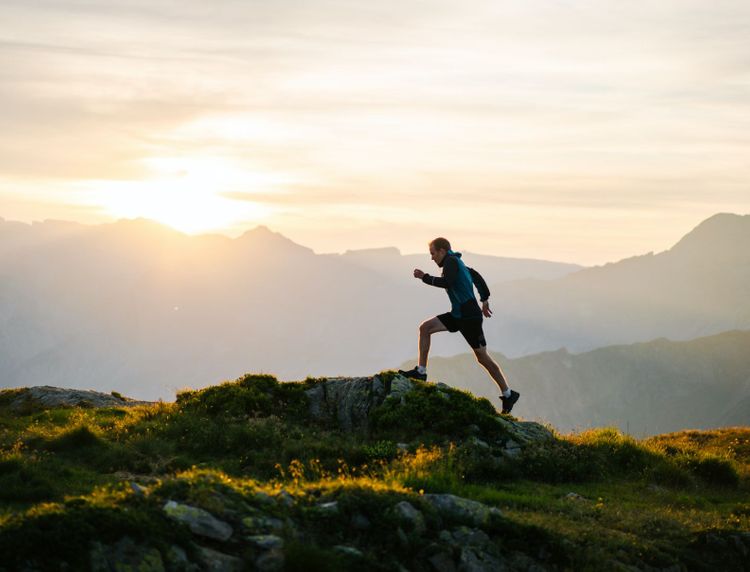Ashtanga Yoga
In these uncertain times, where health risks are on the rise, people often look for ways to follow a healthy lifestyle. One effective way to achieve this goal is to incorporate yoga into daily life.
While there are various types of yoga asanas, Ashtanga yoga is gaining a lot of attention due to the health benefits it offers. But what exactly is Ashtanga yoga? In this blog, we will learn in detail about Ashtanga yoga steps, types, benefits and more.
Share this article
List of Content
- Ashtanga Yoga Meaning: What is Ashtanga Yoga?
- Who is the Father of Ashtanga Yoga?
- Types of Ashtanga Yoga
- Key Principles or Elements of Ashtanga Yoga
- 8 Limbs of Ashtanga Yoga
- Common Ashtanga Yoga Poses
- Common Ashtanga Yoga Benefits
- Difference Between Hatha and Ashtanga Yoga?
- Challenges Associated with Ashtanga Yoga Asanas
- Conclusion
Ashtanga Yoga Meaning: What is Ashtanga Yoga?
Ashtanga yoga is a traditional type of yoga that combines physical postures, breathing techniques and spiritual philosophy. In Sanskrit, "ashta" means eight, and "anga" means parts or limbs. So, Ashtanga Yoga literally means "eight-limbed yoga."
It is known for being quite challenging as it makes you move your body in flowing sequences that match your breath.
One unique aspect of Ashtanga yoga is its set order of poses, which are divided into six series. Most people start with the first series, called the Primary Series. As they improve, they can move on to the more difficult series.
Also Read: Standing Yoga Poses
Who is the Father of Ashtanga Yoga?
T. Krishnamacharya created Ashtanga yoga as an individualised practice for his student K. Pattabhi Jois in the early 20th century. He developed this dynamic system of yoga, which combines breath with movement.
Jois later refined and popularised Ashtanga Yoga, making it widely known across the globe. Krishnamacharya is often considered the "father of modern yoga" for his contributions to shaping contemporary yoga practices.
Types of Ashtanga Yoga
People might not realise that there are different levels or "series" within the Ashtanga Yoga practice. Here are the main types of Ashtanga Yoga:
- Primary Series (Yoga Chikitsa)
This is where everyone starts in Ashtanga yoga. It focuses on cleaning out your body and getting it in proper alignment. The Primary Series includes many forward bends and twists.
- Intermediate Series (Nadi Shodhana)
Once you have mastered the Primary Series, you can move on to the Intermediate Series. This series introduces more challenging poses, including many backbends. It is designed to purify your nervous system.
- Advanced Series A, B, C and D (Sthira Bhaga)
These four series are for very advanced practitioners. They include extremely challenging poses that require strength, flexibility and focus.
Most people practise the Primary Series for a long time before moving on to the Intermediate Series. Many Ashtanga yoga practitioners never move beyond the Primary Series, and that is perfectly okay! Each series offers its benefits and challenges.
Also Read: Health Benefits of Chaturanga Dandasana
Key Principles or Elements of Ashtanga Yoga
Ashtanga yoga has various key principles and elements. This yoga practice promotes physical and mental well-being. Below are the necessary principles of Ashtanga yoga.
Ujjayi Pranayama
One of the key elements of Ashtanga yoga is Ujjayi pranayama, a breathing technique used to increase concentration and focus. This breathing technique is utilised throughout the Ashtanga Yoga asanas.
Drishti
Another key element in Ashtanga yoga is drishti, a specific focal point in each asana. It helps create a more meditative and focused practice.
Vinyasa
This is another crucial element in Ashtanga yoga steps. It is basically the synchronisation of the breath with the sequence of postures in the practice.
Bandha
Another key element of Ashtanga yoga is Bandhas, which are basically body locks. These are encouraged throughout the session to create core stability.
Daily Practice
Lastly, one of the essential practices of Ashtanga yoga is regular six-day practice and one day of rest. Furthermore, women should refrain from doing yoga poses during their menstruation cycle.
8 Limbs of Ashtanga Yoga
Ashtanga yoga consists of 8 limbs, which we are going to discuss below:
Yama (Ethical Principles)
These are the ethical or moral guidelines of Ashtanga yoga. This principle teaches how to live in this world. It includes nonviolence, truthfulness, self-control, non-stealing and non-possessiveness.
Niyama (Personal Disciplines)
Another crucial aspect of Ashtanga yoga is Niyama, which is basically a personal discipline. It helps achieve inner growth by focusing on contentment, cleanliness, self-study, self-discipline and surrender to a higher power.
Asana (Physical Postures)
Ashtanga yoga asanas are physical postures designed to promote core stability, flexibility and strength. These steps or asanas help prepare the body for deeper practice.
Pranayama (Breathing Exercises)
Pranayama is also called breathing exercise, which is basically controlled breath work to balance the mind and body.
Pratyahara (Sensory Withdrawal)
Pratyahara is the process of detaching the senses from external stimuli and focusing inward. It allows practitioners to manage their perceptions and emotions, providing a strong base for concentration and meditation.
Dharana (Concentration)
Another crucial limb of Ashtanga yoga is the concentration process. This practice of training helps the mind to focus on a single point or object. It improves mental focus and clarity, preparing the practitioner for meditation by building the ability to sustain attention.
Dhyana (Meditation)
Dhyana is simply a meditation process in which the focus is on connecting with one's inner self. In this, the mind enters a state of continuous, uninterrupted awareness.
Samadhi (Salvation)
It is the ultimate aim of Ashtanga yoga practice, where there is a union with the divine power and energy. Under this state, practitioners merge with the universal consciousness, which leads to ultimate liberation and enlightenment.
Also Read: Health Benefits of Uttanasana
Common Ashtanga Yoga Poses
Ashtanga yoga contains various postures. These postures help in offering relaxation to the body and mind. Some of the key Ashtanga yoga poses are:
Mountain Pose
- Stand tall with your feet joined, arms by your sides and weight distributed fairly
- Engage your thighs, lift your chest and reach your hands overhead with palms facing each other.
- Keep your body aligned, with your chin slightly tucked and gaze forward. Hold for several breaths.
Hands-Up Pose
- Start in Mountain Pose.
- Breather in and lift your arms overhead, keeping your palms touching or facing each other.
- Keep your shoulders at ease and your body tall, reaching through your fingertips. Hold and breathe.
Forward Fold
- Exhale and bend forward at your hips, bringing your chest towards your thighs.
- Let your hands touch the floor and your feet, or hold opposite elbows. Keep your knees slightly bent if needed.
- Relax your neck and head and breathe deeply, letting the tension release.
Low Push-Up
- From a plank position, keep your body in a straight line and lower your body toward the floor.
- Keep your elbows close to your body and stop when your upper arms are parallel to the floor.
- Maintain strong core engagement to protect your lower back, then either push back up or flow into the next pose.
Upward-Facing Dog
- Place your palms flat on the floor just outside your ribs, with your elbows bent and close to your body.
- Push through your palms and the tops of your feet to lift your chest off the ground. Then, straighten your arms and open your heart.
- Keep your legs straight, pressing the tops of your feet into the mat and open your chest toward the ceiling.
- Gaze slightly upward and hold the pose, breathing deeply.
Downward-Facing Dog
- Begin on your hands and knees with your wrists directly under your shoulders and knees under your hips.
- Lift your hips up and back to form an inverted V-shape with your body.
- Press your hands firmly into the floor, straighten your legs and attempt to bring your heels down toward the ground.
- Keep your head between your arms, ears aligned with your upper arms and hold the pose while breathing deeply.
Hands-Up Pose
- Inhale and raise your arms overhead, keeping them parallel with each other or bringing your palms to face each other.
- Engage your core and lengthen your spine as you reach up through your fingertips.
- Relax your shoulders away from your ears, ensuring your arms are straight and your body is tall.
- Gaze forward or slightly upward, depending on your comfort.
- Hold the pose for several breaths, maintaining your balance and focus.
Warrior
- Start in a standing position and step one foot back, keeping your front knee bent at 90 degrees.
- Keep your back leg straight and feet firmly grounded. Raise your arms overhead, keeping them shoulder-width apart.
- Engage your core and open your hips slightly, ensuring they face forward. Hold and breathe deeply.
Triangle Pose
- Stand with your legs wide apart and extend your arms parallel to the floor.
- Shift your hips back, and as you reach your front hand forward, tilt your torso toward the front leg.
- Lower your front hand to your shin, ankle, or the floor and extend your other arm upwards, keeping both arms in one line. Gaze at your top hand.
Seated Forward Fold
- Sit on the floor with your legs extended straight in front of you.
- Inhale, lengthening your spine and as you exhale, fold forward from your hips, reaching for your feet or shins.
- Keep your back straight, avoiding rounding your spine. Hold and breathe deeply.
Bridge Pose
- Lie on your back. Then, slowly bend your knees, keeping your feet flat on the floor, hip-width apart.
- Press your feet into the floor as you lift your hips, engaging your glutes and core.
- Keep your arms at your sides or clasp your hands under your back for added support. Hold and breathe deeply.
Also Read: Health Benefits of Sarvangasana
Common Ashtanga Yoga Benefits
Ashtanga yoga can help you in many ways. Here are some of the good things that can happen when you practise Ashtanga yoga regularly:
- Strong and Flexible Body
Ashtanga yoga strengthens your whole body and helps you become more flexible. This can make daily activities easier and help prevent injuries.
- Healthy Heart
The continuous movement in Ashtanga yoga is like a heart workout. It can help keep your heart healthy and make it easier to do other physical activities.
- Weight Control
Ashtanga yoga can help you control your weight. It burns calories and boosts your metabolism, allowing you to lose or stay at your ideal weight.
- Less Stress
Like other types of yoga, Ashtanga can help reduce stress and anxiety. It teaches you to relax and be more mindful.
- Better Focus
Ashtanga yoga can help improve your concentration. You learn to focus on your breath and movement, which can help you concentrate better in other areas of your life, too.
- Cleaner Body
The physical practice of Ashtanga yoga, especially the Primary Series, is designed to help clean out your body. You sweat a lot, which helps remove toxins.
- Spiritual Growth
If you are interested in spiritual things, Ashtanga yoga can help you learn more about yourself and feel more connected to the world around you.
- Better Sleep
Many people find that they sleep better when they practise Ashtanga yoga regularly.
- Body Awareness
Ashtanga yoga makes you more conscious of your body. You learn how different parts of your body feel and move.
- Community
Many people make friends in Ashtanga yoga classes. This can give you support and motivation to keep practising.
Difference Between Hatha and Ashtanga Yoga?
Often, people get confused between Hatha and Ashtanga Yoga. Although they are both yoga practices, they differ in posture and approach. Here is the common difference between Hatha and Ashtanga Yoga.
| Parameters | Ashtanga Yoga | Hatha Yoga |
|---|---|---|
| Meaning | A dynamic and structured yoga practice involving physical postures, breath and concentration based on the 8 limbs of yoga. | A traditional yoga practice focusing on physical postures, breathing and relaxation to balance body and mind. |
| Focus | It focuses on strength, flexibility, stamina and discipline, with an emphasis on breath and concentration. | It focuses on flexibility, relaxation and alignment, often with a focus on mindfulness and relaxation. |
| Structure | Fixed sequence of poses with specific transitions and breath synchronisation. | No fixed sequence; the practice may vary between classes, focusing on different poses or techniques. |
| Physical intensity | High intensity with continuous movement, building strength and flexibility. | Moderate intensity with slower movements and longer-held poses. |
| Suitable For | Practitioners looking for a physically challenging, disciplined and structured practice. | This is for beginners or those seeking a gentler, more relaxed practice focusing on flexibility and alignment. |
Challenges Associated with Ashtanga Yoga Asanas
While Ashtanga yoga has many benefits, it is important to know about some challenges and common misunderstandings:
- Physical Intensity
Ashtanga yoga can be quite physically demanding. It can be challenging for beginners or people with certain health conditions. It is important to start slowly and listen to your body.
- Time Commitment
A full Ashtanga practice can take up to two hours. This might be difficult for people with busy schedules.
- Repetitive Nature
In Ashtanga yoga, you do the same sequence of poses each time. Some people might find this boring.
- Risk of Injury
Like any physical activity, you could get hurt if you do not perform the poses correctly or push yourself too hard.
Conclusion
Knowing all about Ashtanga yoga is crucial for mental and physical well-being. Ashtanga yoga offers various health benefits such as improved flexibility, physical straightness, concentration and more. Daily practice of Ashtanga yoga poses can help you relax your body and mind.
However, medical emergencies can occur even if you follow a healthy lifestyle, such as doing yoga or eating healthy. The unforeseen medical crisis can bring additional financial burdens. Therefore, it is crucial to invest in a health insurance plan to safeguard yourself.
A medical insurance plan helps you get quality medical care and treatment without disrupting your savings. TATA AIG offers various health insurance plans that are customised to your unique health needs.
For instance, our health insurance for senior citizens is designed to offer medical coverage to individuals over 60 years of age. The plan is carefully curated by considering the needs of senior citizens.
From hospitalisation expenses to daycare procedures to ambulance coverage and more, we offer comprehensive protection. Secure your and your family's health now with our affordable health insurance plan.
Frequently Asked Questions
Share this article
Latest from our blogs

15 terms you must know before buying health insurance
We have listed all 15 terms a health insurance buyer should ...
Read More
How Much Health Insurance Do You Need?
While more and more people are getting insurance for things ...
Read More
4 simple steps to claim MediClaim in India
Check that all the documents contain required information li...
Read More